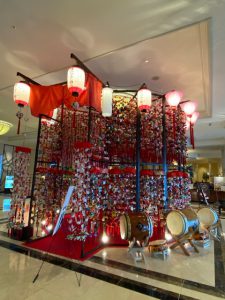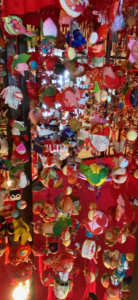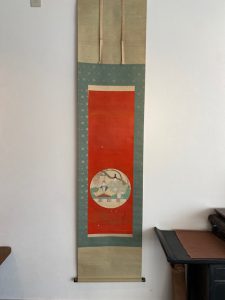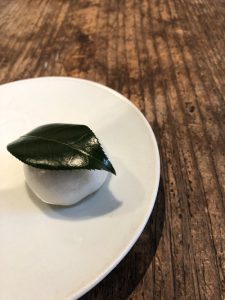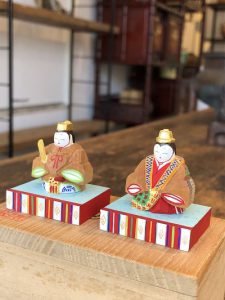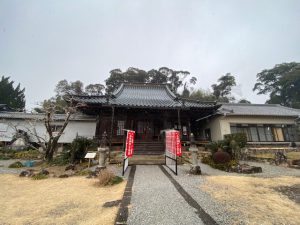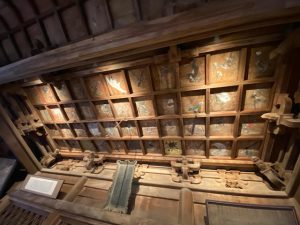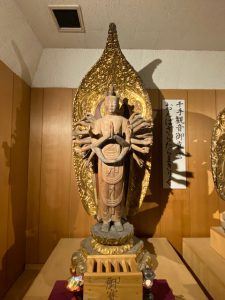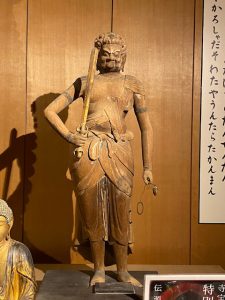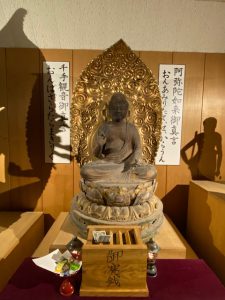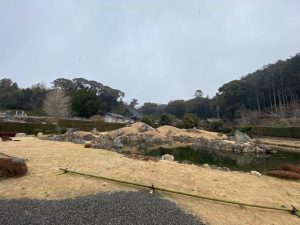チョコ熱があつい名古屋女子(愛知県名古屋市千種区姫池通 骨董買取いたします 古美術風光舎名古屋店)
2022.02.12
みなさま、こんにちは。スタッフYです。
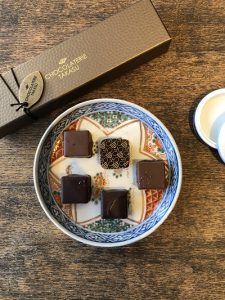
今年もバレンタインデーまであと3日。もはや、本命とか義理とか自分にご褒美とかどうでもよくて、この時期になりますとここ名古屋はチョコレートの話題が必ず持ち上がるのですが、もうおわかりですね。チョコの祭典「アムール・デュ・ショコラ」。
JR名古屋高島屋にて、今年は1月20日から2月14日まで開催されております。今週末はまさに佳境でありましょうか。
参戦した友人からは、「○○のチョコはもう売り切れた」とか「あの時間帯は穴場」とか「○○は絶対おすすめ」などど情報交換が必ず飛び交うというのが毎年恒例でありまして。もう全国的にそろそろ周知されていてきおりますので、他県の皆さま、名古屋の風物詩ですのでこの状況が落ち着きましたら一度は参戦をおススメしたい。と、私は勝手に思っております。
そんなチョコの祭典「アムール・デュ・ショコラ」。
毎年有名パティシエやショコラティエが一堂に会し、テレビやマスコミ各社が取り上げ、新作や話題性や売り上げを熱く競うという、訪れた方はわかると思いますが、パティシエやショコラティエそして購入したい方にとってもまさに闘いの場といった空気感であります。
ですが、日本中の有名なパティシエやショコラティエが集まる祭典が年に一度くらいあってもいいような、そして東京ではなくて名古屋で開催してくれることが地元民としては大変うれしく思います。
毎年熱い名古屋のバレンタイン商戦を牽引するアムール・デュ・ショコラは、20年まで11年連続で売上高が全国百貨店のトップに輝いており、20年には過去最高の32億円を達成。これ、チョコの売りあげですよね笑。売り場もかつては朝5時から整理券待ちの行列ができたほどですが、この状況下に対応し21年もオンライン販売を開始。それを含め21億円を売り上げたとのことです。
今年のアピールポイントはどうやら地元食材の活用による地域貢献。
名古屋市出身で、パティスリー・サダハル・アオキ・パリの青木定治氏は「海外に行けない分、日本の色々な食材を発掘できた」と振り返っており、三重県亀山市の茶葉を使用した限定ボンボンや、岐阜県産の和栗を使った新作の限定トリュフを売り出しをしております。
今年は残念ながら私も売り場へは足を運ぶことができなかったのですが、オンライン販売に参戦いたしました。ですが、人気商品は早くも売り切れ。こちらも熱い戦いだったようです。やはり、売り場へ行けばよかったと後悔いたしました。
以前参戦いたしました時には、各お店のブースにテレビでも有名なパティシエやショコラティエが売り場に自らショーケースの後ろのお立ち台なる顔見世の台に立ち、ご本人に直接会って少しお話もできたり、購入商品にはサインをいただけるというまたとないチャンス。そんなテンションが会場中にまきおこっておりますので、まあおかしくなります。そして予算なんていつのまにかぶっ飛ぶというぐあい。
そんなチョコの購入総額、気になりませんでしょうか。JR名古屋高島屋の調査によると、22年のバレンタインで購入するチョコの予算総額はなんと「3万円以上」と答えた人が4割に。まあまあの金額ではありますが、チョコは日持ちがするものもありますのでゆっくり食べようとか、所用で使われたり、せっかく来たからとか購入目的はいろいろでしょう。ですが、私のように変なテンションでつい買ってしまった方も結構いらっしゃるのでは。
それくらいの、おかしなテンションと化すチョコの祭典いえ、チョコの戦い、一度足を運んでみますときっと、その理由がわかってもらえるかと思います。他県の皆様も、この状況下が落ち着きましたらこの戦いに参戦しに来てくださいませ。
今年は会場に行けませんでしたので、路面店にございます私のお気に入りのショコラティエにて購入。
今年は一旦落ち着いて、チョコを味わいたいと思います。
それでは、ごきげんよう。
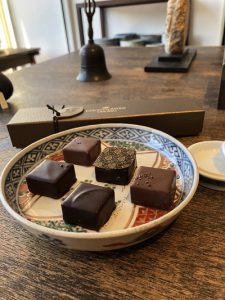
Hello everyone, this is Staff Y.
Three days left until Valentine’s Day this year. It doesn’t matter if it’s your favorite, your in-law, or your reward, and at this time of year, the topic of chocolate will definitely come up here in Nagoya, but you already know. Chocolate festival “Amour du Chocolat”.
It is held at JR Nagoya Takashimaya from January 20th to February 14th this year. Should we be an overseas Chinese this weekend?
It is an annual event that friends who participated in the war always exchange information such as “The chocolate of XX is already sold out”, “It’s a little-known spot at that time”, and “I definitely recommend XX”. It is becoming well known nationwide, so it is a tradition of Nagoya to everyone in other prefectures, so once this situation has settled down, I would recommend participating in the war. I think it is selfish.
Such a chocolate festival “Amour du Chocolat”.
Every year, famous pastry chefs and chocolatiers meet together, and TV and media companies take up the topic and compete hotly for new works, topicality and sales. It is a feeling of air like a place.
However, as a local, I am very happy that there may be a festival where famous pastry chefs and chocolatiers from all over Japan gather once a year, and that it will be held in Nagoya instead of Tokyo.
Amour du Chocolat, which leads the hottest Valentine’s Day sales season in Nagoya every year, has been the top department store in Japan for 11 consecutive years until 2020, reaching a record high of 3.2 billion yen in 2020. This is chocolate sales, isn’t it? The sales floor used to have a line waiting for numbered tickets from 5 am, but in response to this situation, online sales have started for 21 years. Including that, it has sold 2.1 billion yen.
Apparently, this year’s appeal is to contribute to the local community by utilizing local ingredients.
Sadaharu Aoki of Patisserie Sadaharu Aoki Paris, who is from Nagoya city, recalls, “I was able to discover various Japanese ingredients because I could not go abroad,” and limited to using tea leaves in Kameyama city, Mie prefecture. We are selling new limited truffles using bonbons and Japanese chestnuts from Gifu prefecture.
Unfortunately I couldn’t go to the sales floor this year, but I participated in online sales. However, popular products are already sold out. It seems that this was also a hot battle. After all, I regretted that I should have gone to the sales floor.
When I participated in the war before, pastry chefs and chocolatiers, who are famous for TV, stand at the booth of each shop on the stand behind the showcase, where they can meet themselves and talk a little or buy. A unique opportunity to sign a product. Such tension is spreading all over the venue, so it will be strange. And the budget is just like flying away.
Don’t you care about the total purchase price of such chocolate? According to a survey by JR Nagoya Takashimaya, 40% of the respondents answered that the total budget for chocolate purchased at Valentine’s Day in 2010 was “30,000 yen or more”. Although it is a reasonable amount of money, some chocolates will last for a long time, so there are various purposes for purchasing them, such as eating them slowly, using them for their own purposes, or because they came here. However, there may be quite a few people like me who just bought it with strange tension.
It’s a chocolate festival that turns into a strange tension, but once you visit the battle of chocolate, I’m sure you will understand the reason. Everyone in other prefectures should come to participate in this battle when this situation calms down.
I couldn’t go to the venue this year, so I bought it at my favorite chocolatier at the roadside store.
This year, I would like to calm down and taste the chocolate.
Well then, good luck.
**********************
まだまだ寒い日が続いております、体調など壊さぬようお気をつけてお過ごしくださいませ。
生活様式の変化とともに、大切なお品を整理されている方も多いことと思われます。
ここ風光舎では、古美術品や骨董品の他にも絵画や宝石、趣味のお品など様々なジャンルのものを買受しております。
お片付けをされていて、こういうものでもいいのかしらと迷われているものでも、どうぞお気軽にご相談下さいませ。
風光舎は、出張買取も強化しております。
愛知県内はもちろん、岐阜県・三重県その他の県へも出張いたします。
どんなにご近所の方でもお伺いできますので、まずはお電話お待ちしております。
愛知県名古屋市千種区・骨董 買取
『古美術 風光舎 名古屋店』
TEL 052(734)8444
10:00-17:00 OPEN

